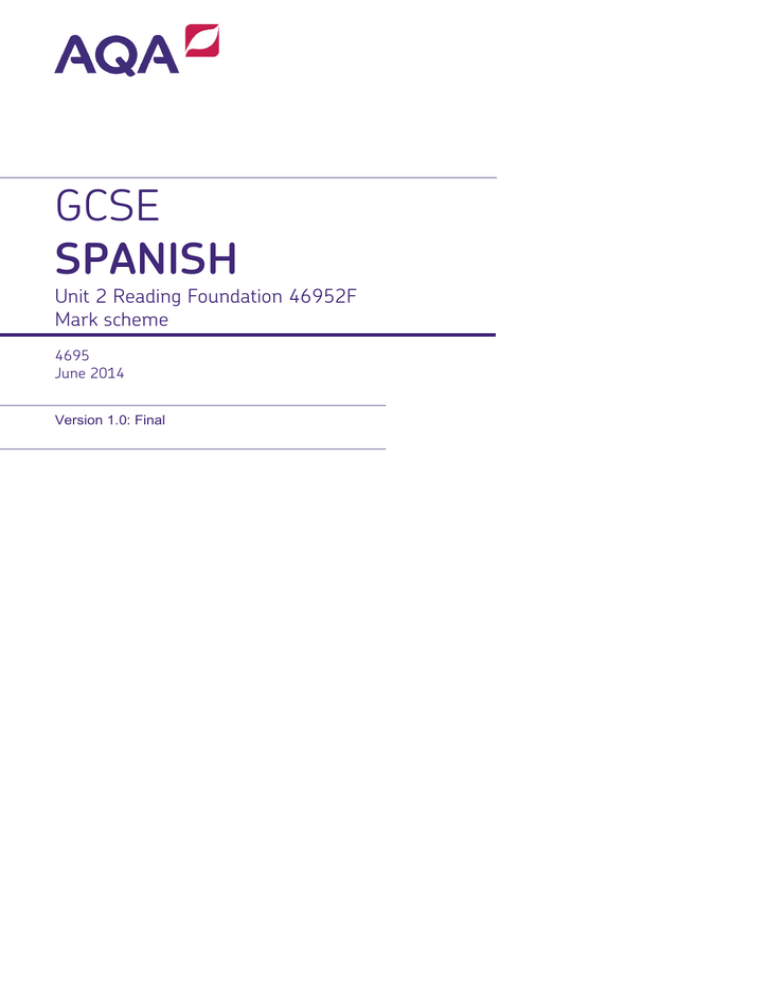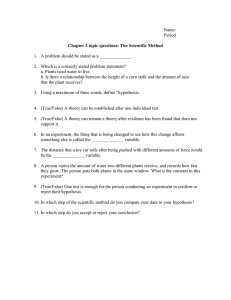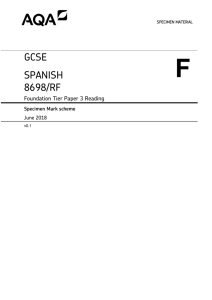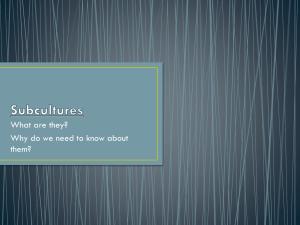
GCSE
SPANISH
Unit 2 Reading Foundation 46952F
Mark scheme
4695
June 2014
Version 1.0: Final
Mark schemes are prepared by the Lead Assessment Writer and considered, together with the
relevant questions, by a panel of subject teachers. This mark scheme includes any amendments
made at the standardisation events which all associates participate in and is the scheme which was
used by them in this examination. The standardisation process ensures that the mark scheme covers
the students’ responses to questions and that every associate understands and applies it in the same
correct way. As preparation for standardisation each associate analyses a number of students’
scripts: alternative answers not already covered by the mark scheme are discussed and legislated for.
If, after the standardisation process, associates encounter unusual answers which have not been
raised they are required to refer these to the Lead Assessment Writer.
It must be stressed that a mark scheme is a working document, in many cases further developed and
expanded on the basis of students’ reactions to a particular paper. Assumptions about future mark
schemes on the basis of one year’s document should be avoided; whilst the guiding principles of
assessment remain constant, details will change, depending on the content of a particular
examination paper.
Further copies of this Mark Scheme are available from aqa.org.uk
Copyright © 2014 AQA and its licensors. All rights reserved.
AQA retains the copyright on all its publications. However, registered schools/colleges for AQA are permitted to copy material from this
booklet for their own internal use, with the following important exception: AQA cannot give permission to schools/colleges to photocopy any
material that is acknowledged to a third party even for internal use within the centre.
MARK SCHEME – GCSE Spanish – 4695 – June 2014
READING TESTS
Notes on the Marking Scheme
Non-verbal Answers
Follow the mark scheme as set out.
Verbal Answers
1.
The basic principle of assessment is that students should gain credit for what they know, understand and can
do. The following guidance should be borne in mind when marking.
(a)
Credit should be given for all answers which convey the key idea required intelligibly and without
ambiguity. A separate assessment of spelling, punctuation and grammar is not required on these
papers because of the nature of the answers. However, these aspects are an integral part of
assessing communication and marks cannot be awarded where errors in spelling, punctuation or
grammar lead to a failure to communicate the required information without ambiguity.
(b)
Where a student has given alternatives or additional information in an answer, the following criteria
should be applied:
if the alternative/addition does not contradict the key idea or make it ambiguous, accept;
if the alternative/addition contradicts the key idea or makes it ambiguous, reject.
(c)
Where numbered lines are given within a question/section of a question, credit should be given for
correct answers, no matter which line they appear on.
(d)
Where a question has more than one section, a student may include as part of the answer to one
section the information required to answer another section. For instance, the information required to
answer section (b) might be given as part of the answer to section (a). In such cases, credit should be
given for having answered section (b), provided that no incorrect answer has been given for that
section in the correct place.
(e)
Where a question or part of a question carries more than one mark, students are given credit for all the
correct answers they give, even if they have given incorrect answers as well, except where any of the
latter contradicts a correct answer that they have given.
2.
...../..... means that these are acceptable alternative answers. (.....) means that this information is not needed
for full marks.
3.
In questions where students are asked to name, for example, three types of vegetable sold in the market, only
the first three items they write down should be considered.
4.
Accept
T/F/?
4/X/?
a mix and match approach using the above, where the response is clear and unambiguous (eg. T and
4 are both used by the student).
5.
In multiple choice questions where students must choose one letter or number, they should automatically get no
mark awarded if they give more than one. If the rubric instructs them to write one letter or number in the box
and they do so, but write a second letter or number outside the box too, then the answer in the box should be
considered.
6.
No mark scheme can cover all possible answers. When in doubt:
look for the key idea, where this is appropriate.
NFP = no further penalty
7.
Where a student has crossed out an answer and what was underneath remains legible then it should be
assessed. Where part of an answer is crossed out then only what remains should be considered.
8.
Where a student spells the answer in such a way that it is a word in the target language, no credit can be
awarded.
9.
If a student offers two different responses in English or in the target language eg dog (cat) or dog (gato) where
the answer is dog, no credit can be awarded
3 of 7
MGARK SCHEME – GCSE Spanish – 4695 – June 2014
Question
1
Accept
B
Question
Mark
1
Accept
Mark
(He/she has) Blue eyes
2(a)
He is popular
1
Question
Accept
1
Accept
2(c)
Mark
3
Question
4
In/opposite/in front of/ the
park
Reject/Notes
Any specific day
Every day
Question
Reject/Notes
Park
1
Accept
Play music
Mark
Next to/near/by/close to a park
2(d)
Reject/Notes
Music
2(b)
Question
He is good – looking
Mark
Listen to music
Question
Reject/Notes
Once a day
1
Accept
F, E, G, B (in any order)
Accept
B, C, F (in any order)
Mark
4
Mark
3
4 of 7
MGARK SCHEME – GCSE Spanish – 4695 – June 2014
Question
Accept
Mark
Follow/have/eat a good/healthy/balanced
diet
5(a)
Reject/Notes
All references to a better
diet
1
Anything that implies going
on a diet
Any answers without a
verb
Question
Accept
Mark
Prepare/cook/make healthy
dish(es)/meal(s)
5(b)
Reject/Notes
Prepare good
meals/dishes
1
Plates
References to diet(s)
References to specific
meals eg lunches/dinners
Question
5(c)
Accept
Change bad habits
Question
6(a)
Question
6(b)
Question
6(c)
Accept
Poverty
Mark
1
Mark
1
Accept
Quiz/quizzes/competition(s)/contest(s)/
game shows
Accept
Hardworking/(good) worker
Mark
1
Mark
Reject/Notes
Change habits
Reject/Notes
Poverty in the cities
Reject/Notes
Concerts/races
Reject/Notes
1
5 of 7
MGARK SCHEME – GCSE Spanish – 4695 – June 2014
Question
7(a)
Accept
A
Question
7(b)
7(c)
B
A
8(b)
P+N
8(c)
P
8(d)
Question
Mark
1
Accept
N
Question
Mark
1
Accept
Question
Mark
1
Accept
Question
Mark
1
Accept
Question
8(a)
1
Accept
Question
Mark
Mark
1
Accept
N
Mark
1
Accept
Mark
Expensive/dear food/lunch/the price of
the food/lunch
9(a)
The canteen is expensive
Food
1
The food is delicious/nutritious but
expensive
Question
Accept
The classes are good/fun but the rules
are strict.
The food is
delicious/nutritious and
expensive
Mark
Reject/Notes
Rules
Strict rules/the rules are (too) strict
9(b)
Reject/Notes
1
The classes are good/fun
and the rules are strict.
6 of 7
MGARK SCHEME – GCSE Spanish – 4695 – June 2014
Question
Accept
Mark
Reject/Notes
Library
Old(fashioned)/outdated library
The books are old
9(c)
The facilities are modern but the library is
old.
1
The facilities are modern
and the library is old.
References to the reading
material rather than the
building being old.
Question
Accept
Mark
Difficult/hard homework
9(d)
The teachers are intelligent/nice but the
homework is difficult
Question
10(a)
Accept
A
Question
10(b)
10(c)
Question
11
(Too much) homework
1
The teachers are
intelligent/nice and the
homework is difficult
Mark
1
Accept
C
Question
Reject/Notes
Mark
1
Accept
B
Mark
1
Accept
A, E, D (in any order)
Mark
3
Total 35 marks
7 of 7




